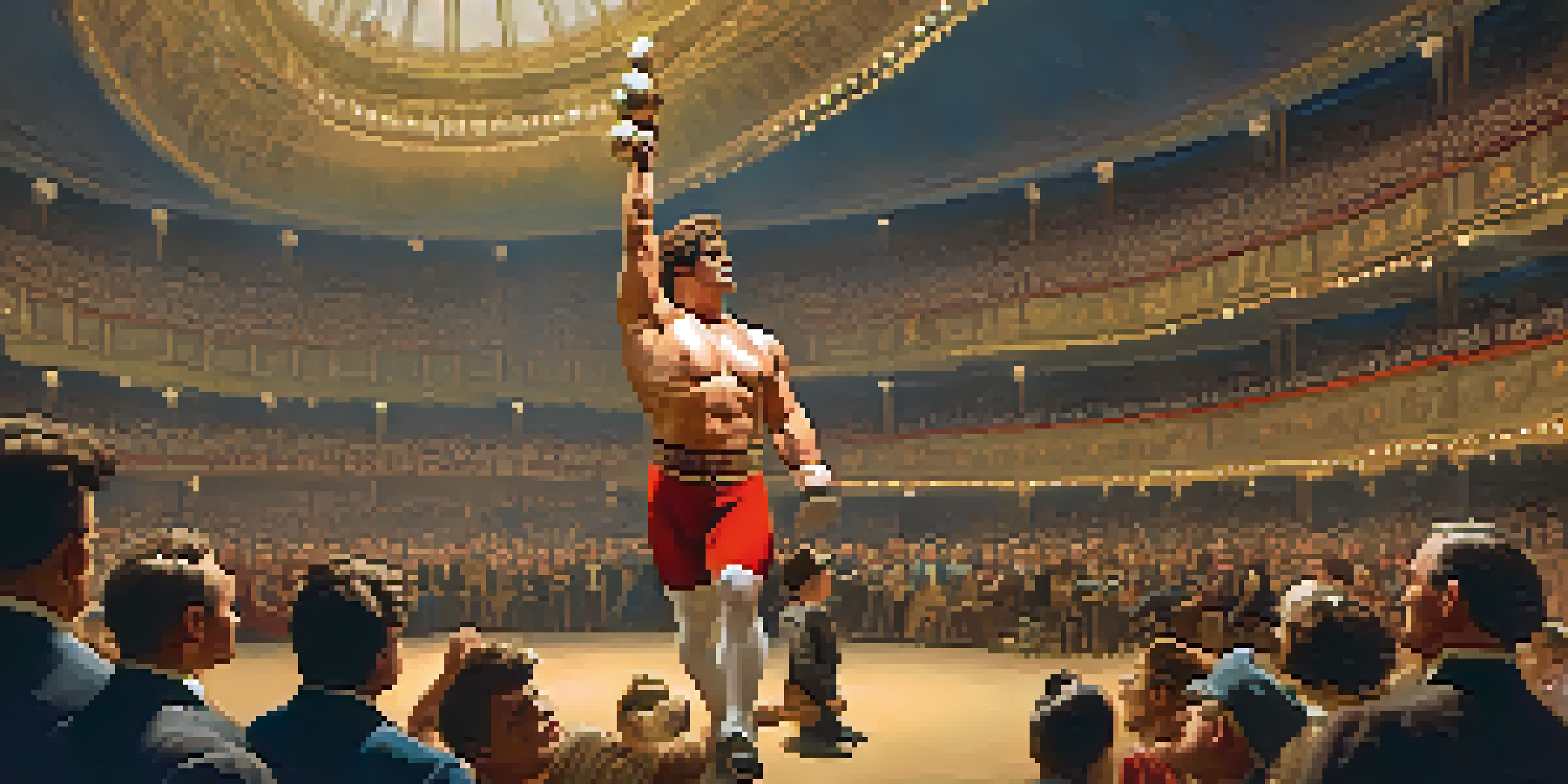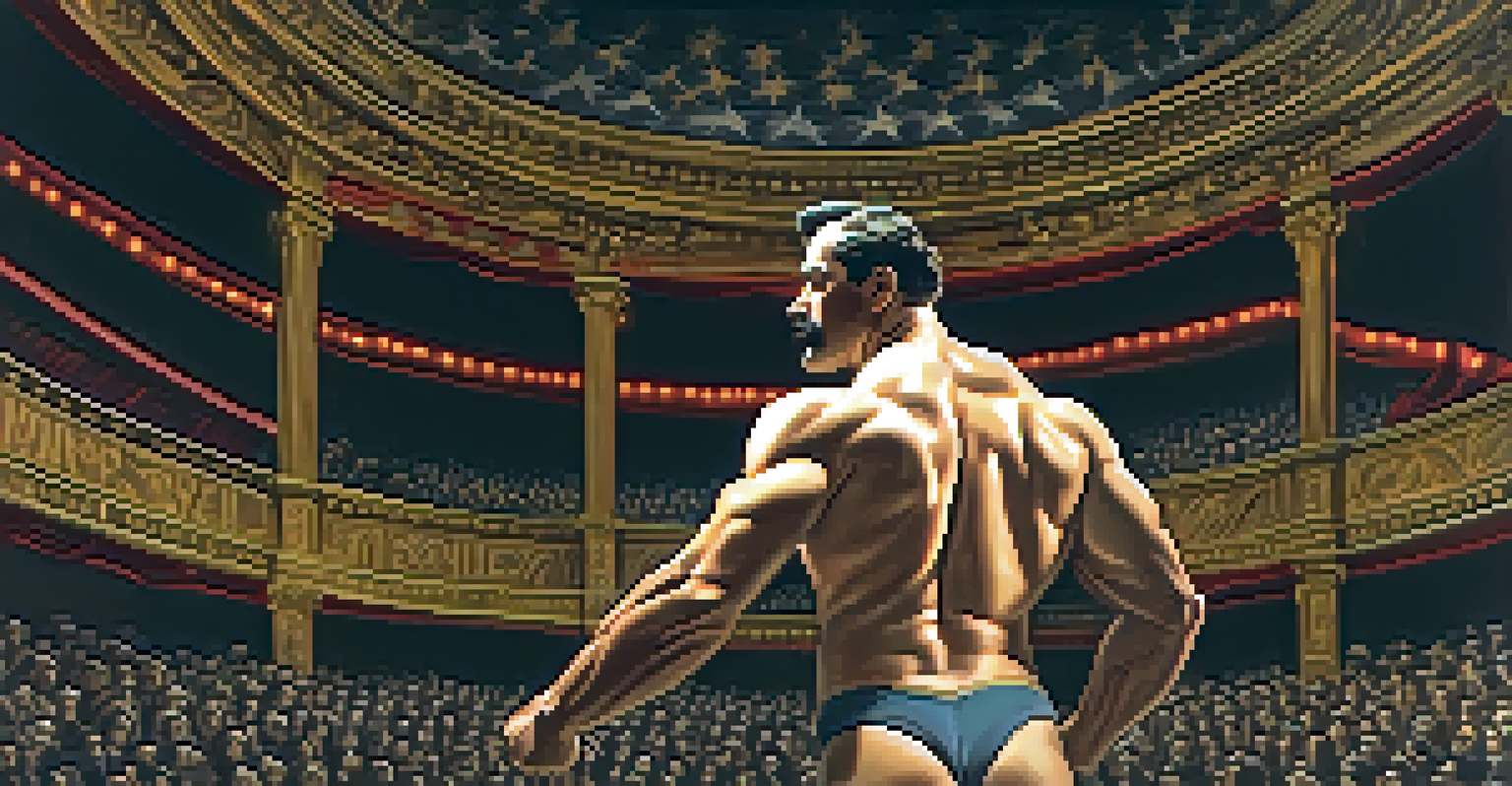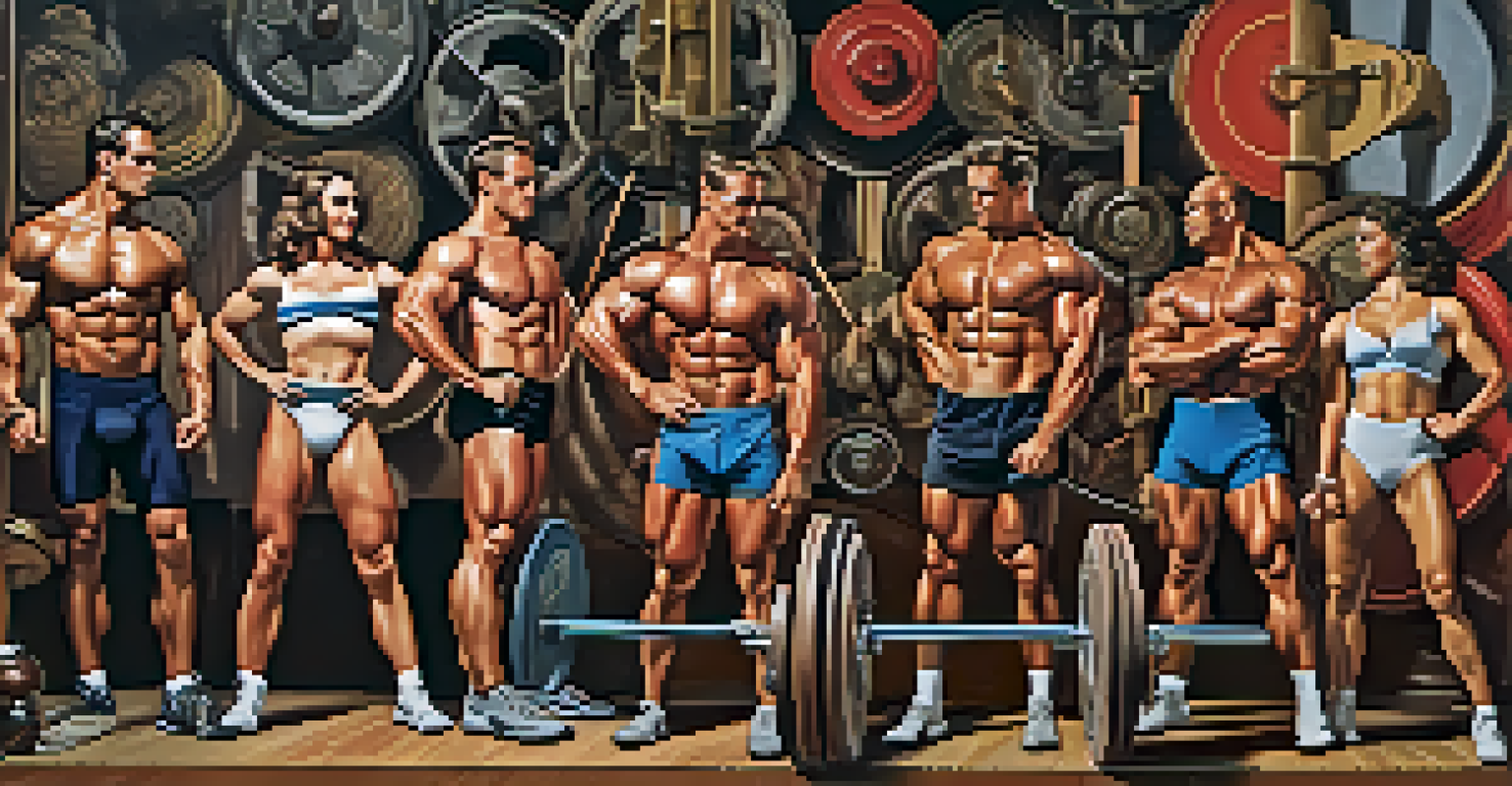The Birth of Modern Bodybuilding in the 19th Century

The Roots of Bodybuilding: Early Fitness Trends
In the early 19th century, physical fitness began to gain traction as a cultural phenomenon. The Industrial Revolution, with its focus on machinery and sedentary work, pushed many to seek healthier lifestyles. This era saw an increase in interest in physical culture, with many people beginning to appreciate the aesthetic appeal of a well-defined physique.
Physical fitness is not only one of the most important keys to a healthy body, it is the basis of dynamic and creative intellectual activity.
Men and women alike started participating in various physical activities, from gymnastics to weightlifting. The concept of fitness was evolving, with a noticeable shift away from merely practical strength to an idealized form of physical beauty. This growing fascination laid the groundwork for the emergence of bodybuilding as a distinct discipline.
Pioneers of this period, such as strongmen in traveling circuses, showcased the human body's potential through feats of strength and endurance. These performances captured public imagination and set the stage for a new way of thinking about physicality.
Eugen Sandow: The Father of Modern Bodybuilding
One of the most significant figures in the history of bodybuilding is Eugen Sandow, often referred to as the father of modern bodybuilding. Born in 1867, Sandow was not just a strongman but a visionary who understood the importance of aesthetics and presentation. His impressive physique and charming personality made him a household name in the late 19th century.

Sandow revolutionized the concept of bodybuilding by promoting the idea of 'muscle display' as an art form. He organized the first bodybuilding competitions and developed a system of training and nutrition that emphasized both strength and symmetry. His work helped establish bodybuilding as a legitimate sport and paved the way for future generations.
Bodybuilding's Cultural Roots
The rise of physical fitness in the 19th century, fueled by the Industrial Revolution, sparked a cultural fascination with the aesthetic appeal of a well-defined physique.
Beyond his physical prowess, Sandow was a savvy marketer, using his charm and creativity to promote fitness and bodybuilding to the masses. He even published fitness books and launched a line of exercise equipment, demonstrating that bodybuilding could be both a lifestyle and a business.
The Influence of Physical Culture Movements
As bodybuilding began to take shape, it drew inspiration from various physical culture movements of the time. These movements emphasized holistic health, combining physical fitness with mental well-being and spiritual growth. The idea was that a strong body contributed to a strong mind, resonating with many individuals seeking balance in their lives.
The difference between a successful person and others is not a lack of strength, not a lack of knowledge, but rather a lack in will.
Organizations like the Turnverein, which promoted gymnastics and physical education, played a crucial role in popularizing fitness. They encouraged community participation in physical activities, fostering a sense of camaraderie and shared goals among participants. This communal aspect of fitness culture ultimately contributed to the growth of bodybuilding as a competitive sport.
Additionally, the influence of European strongmen and athletes introduced new techniques and training methods to aspiring bodybuilders. This cross-pollination of ideas and practices enriched the bodybuilding landscape and encouraged individuals to explore their physical potential.
The Birth of Bodybuilding Competitions
With the rise of bodybuilding came the establishment of competitions that allowed athletes to showcase their physiques. The first notable competition was held in 1901, organized by Eugen Sandow himself, and it attracted a significant audience. This event marked a turning point, highlighting the growing popularity of bodybuilding as a sport.
Competitions provided a platform for bodybuilders to demonstrate their hard work and dedication. Participants were judged not only on their strength but also on their muscular development and overall aesthetics. This emphasis on appearance set the stage for the modern bodybuilding competitions we know today, including the Mr. Olympia contest.
Eugen Sandow's Influence
Eugen Sandow, known as the father of modern bodybuilding, transformed the sport by emphasizing muscle aesthetics and promoting competitions that established bodybuilding as a legitimate discipline.
As competitions grew in popularity, they also became more organized, with standardized judging criteria and categories for different body types. This structure helped elevate bodybuilding's status as a recognized sport, attracting more participants and spectators alike.
The Role of Women in 19th Century Bodybuilding
While bodybuilding is often associated with men, women also played a crucial role in its development during the 19th century. Pioneering women like Kate Adie and other strongwomen defied societal norms by participating in physical culture. They showcased their strength and athleticism, challenging the traditional views of femininity.
These women not only entertained audiences but also inspired others to embrace physical fitness. Their performances demonstrated that women could possess strength and grace, paving the way for future generations of female bodybuilders. However, their contributions were often overshadowed by their male counterparts in a predominantly male-dominated sport.
The gradual acceptance of women in bodybuilding competitions in later years can be traced back to the efforts of these early strongwomen. Their tenacity helped lay the groundwork for the celebration of female athletes in the fitness world today.
The Impact of Media on Bodybuilding Popularization
The rise of mass media in the late 19th century played a critical role in popularizing bodybuilding. Magazines and newspapers began to feature articles on fitness, training, and the benefits of a strong physique. This exposure helped demystify bodybuilding and made it accessible to a broader audience, encouraging more people to get involved.
Photographs of bodybuilders began to appear in publications, showcasing their physiques and inspiring others to pursue similar goals. The visual representation of strength and beauty captured public interest and contributed to a growing culture of fitness. This media attention created a feedback loop, further fueling interest in bodybuilding as more people aspired to achieve those idealized bodies.
Women Pioneers in Bodybuilding
Women played a significant role in 19th-century bodybuilding, challenging gender norms and inspiring future generations of female athletes despite facing overshadowing from their male counterparts.
As the 20th century approached, the combination of media coverage and increased competition helped solidify bodybuilding's place in popular culture. It became a symbol of health and vitality, encouraging individuals from all walks of life to embrace fitness.
Legacy and Evolution of Bodybuilding into the 20th Century
The 19th century laid a robust foundation for the evolution of bodybuilding into the 20th century. The principles and practices established during this time continued to influence the sport as it matured. Bodybuilding began to diversify, with new training methods, dietary approaches, and styles emerging as athletes sought to push the boundaries of human potential.
As bodybuilding gained popularity, it began to attract a global audience, with competitions held in various countries. This international interest led to the establishment of iconic events, such as the Mr. Olympia contest, which debuted in 1965 and remains a hallmark of bodybuilding excellence today. The sport continued to evolve, reflecting changing societal attitudes toward fitness and aesthetics.

Ultimately, the legacy of 19th-century bodybuilding can still be felt today. The principles of hard work, dedication, and the pursuit of physical excellence remain at the heart of bodybuilding culture, inspiring new generations of athletes to embrace the sport and strive for greatness.